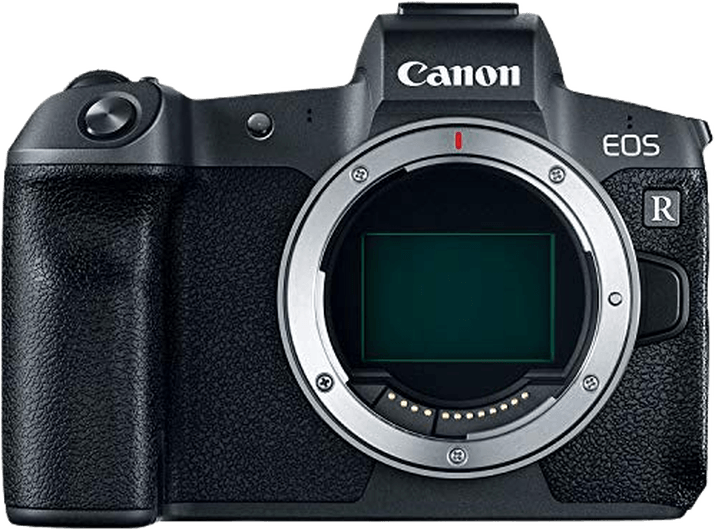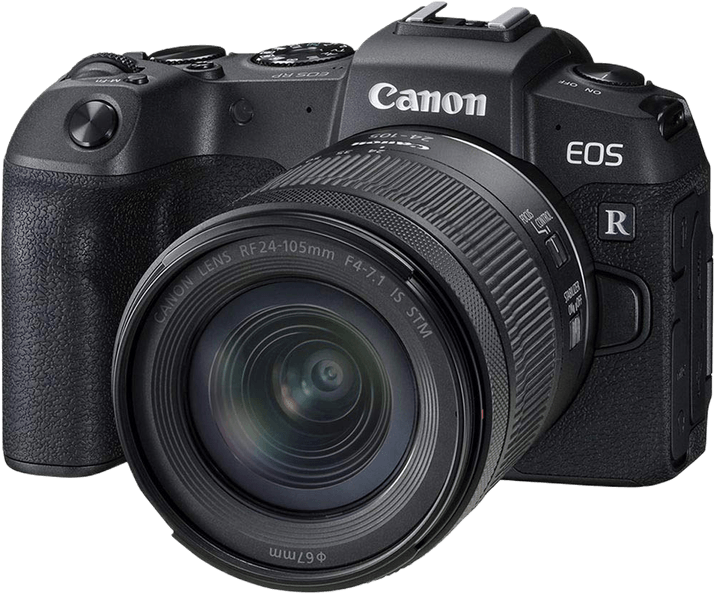Canon EOS R vs EOS RP Comparison
Canon EOS R

Canon EOS RP

The Canon EOS R emerges as the winner with a score of 74/100, outperforming the Canon EOS RP, which scored 65/100. Both cameras are mirrorless and were released in 2018 and 2019, respectively. They share similarities in dimensions, with the Canon EOS R measuring 136 x 98 x 84mm and the Canon EOS RP at 133 x 85 x 70mm.
The Canon EOS R excels with its higher score, offering better overall performance. However, the Canon EOS RP has its advantages, such as being slightly lighter at 440g compared to the EOS R’s 485g and having a lower launch price of $1300, making it more budget-friendly than the EOS R’s $2300 price tag.
Given these factors, the Canon EOS R stands out as the superior camera, but the Canon EOS RP may still be a suitable option for those seeking a lighter and more affordable alternative.
Canon EOS R vs EOS RP Overview and Optics
The Canon EOS R outperforms the Canon EOS RP in optics, scoring 73/100 compared to the RP’s 67/100. Both cameras share several specifications, including a CMOS sensor, Digic 8 processor, full-frame sensor size, Canon RF lens mount, and lack of image stabilization.
The EOS R’s superior performance is due to its higher megapixel count of 30.3, compared to the RP’s 26, and faster shooting speed of 8 frames per second, while the RP only manages 5 frames per second. Additionally, the EOS R has a better DXOMARK score for the sensor, with 89 points compared to the RP’s 85 points. These factors contribute to the EOS R’s higher score and better overall performance in optics.
Despite its lower score, the EOS RP still has some advantages. Its lower megapixel count and shooting speed may be sufficient for casual photographers or those who prioritize compactness and affordability. The RP’s full-frame sensor and Canon RF lens mount compatibility ensure that it can still produce high-quality images, despite the differences in performance.
To sum up, the Canon EOS R is the superior camera in terms of optics, offering better image quality and faster shooting speed. The EOS RP, while not as impressive, still provides adequate performance for certain users and situations. Ultimately, the choice between these two cameras depends on individual preferences and needs.
Canon EOS R vs EOS RP Video Performance
Both the Canon EOS R and the Canon EOS RP have equal video scores of 70 out of 100. They share several video capabilities, including a maximum video resolution of 4K and maximum video dimensions of 3840 x 2160. Additionally, both cameras have built-in time-lapse functionality.
The Canon EOS R has a slight advantage over the EOS RP in terms of video frame rate, offering a maximum of 30fps compared to the RP’s 25fps. This higher frame rate allows the EOS R to produce smoother video footage, especially when capturing fast-moving subjects or scenes.
Although the Canon EOS RP has a lower maximum video frame rate, it still delivers high-quality 4K video footage. The difference in frame rates may not be significant for some users, particularly those who primarily shoot still images and occasionally capture video. In addition, the EOS RP is typically more affordable than the EOS R, making it a more budget-friendly option for those who do not require the extra video frame rate.
When comparing the video capabilities of the Canon EOS R and EOS RP, it is clear that the EOS R offers a minor advantage with its higher maximum video frame rate of 30fps. However, this may not be a deciding factor for all users, as both cameras provide impressive 4K video resolution and time-lapse functionality. Ultimately, the choice between these two cameras will depend on individual preferences and budget considerations.
Canon EOS R vs EOS RP Features and Benefits
The Canon EOS R outperforms the Canon EOS RP in features with a score of 87/100 compared to the RP’s 70/100. Both cameras share several specifications, including touchscreen functionality, flip screens, and the absence of GPS. They also both have WIFI and Bluetooth capabilities.
The Canon EOS R excels with its larger 3.2-inch screen size and higher screen resolution of 2,100,000 dots. This provides users with a clearer and more detailed image preview, making it easier to review photos and videos. The EOS R’s superior feature score reflects these advantages in screen size and resolution.
On the other hand, the Canon EOS RP falls short with a smaller 3-inch screen size and a lower screen resolution of 1,040,000 dots. This means that the image preview on the EOS RP is less clear and detailed compared to the EOS R. However, it is important to note that despite these shortcomings, the EOS RP still offers touchscreen functionality and a flip screen, making it a viable option for those who prioritize these features.
To conclude, the Canon EOS R proves to be the better camera in terms of features, primarily due to its larger screen size and higher screen resolution. The EOS RP, while lacking in these aspects, still offers a touchscreen and flip screen, making it a suitable choice for users who find these features essential. Ultimately, the decision between the two cameras will depend on individual preferences and priorities in terms of features and functionality.
Canon EOS R vs EOS RP Storage and Battery
The Canon EOS R triumphs over the Canon EOS RP in storage and battery, scoring 35/100 compared to the RP’s 29/100. Both cameras share similarities in storage, featuring one memory card slot each and accepting SD, SDHC, and SDXC cards (UHS-II compatible). Furthermore, both cameras offer USB charging capabilities.
The EOS R outperforms the EOS RP in battery life, providing 370 shots per charge, while the RP only yields 250 shots. This difference is due to the EOS R’s LP-E6N battery, which is superior to the RP’s LP-E17 battery. Consequently, the EOS R is better for extended shooting sessions.
Although the EOS RP has a lower score, it doesn’t necessarily excel in any storage or battery aspect compared to the EOS R. The main advantage of the EOS RP is its lower price point, making it more accessible to budget-conscious consumers.
In essence, the Canon EOS R is the superior choice for those prioritizing storage and battery performance. However, the EOS RP remains a viable option for those seeking a more budget-friendly camera.
Canon EOS R vs EOS RP Alternatives
If you haven’t decided on a camera just yet, have a look at these popular camera comparisons for inspiration:
